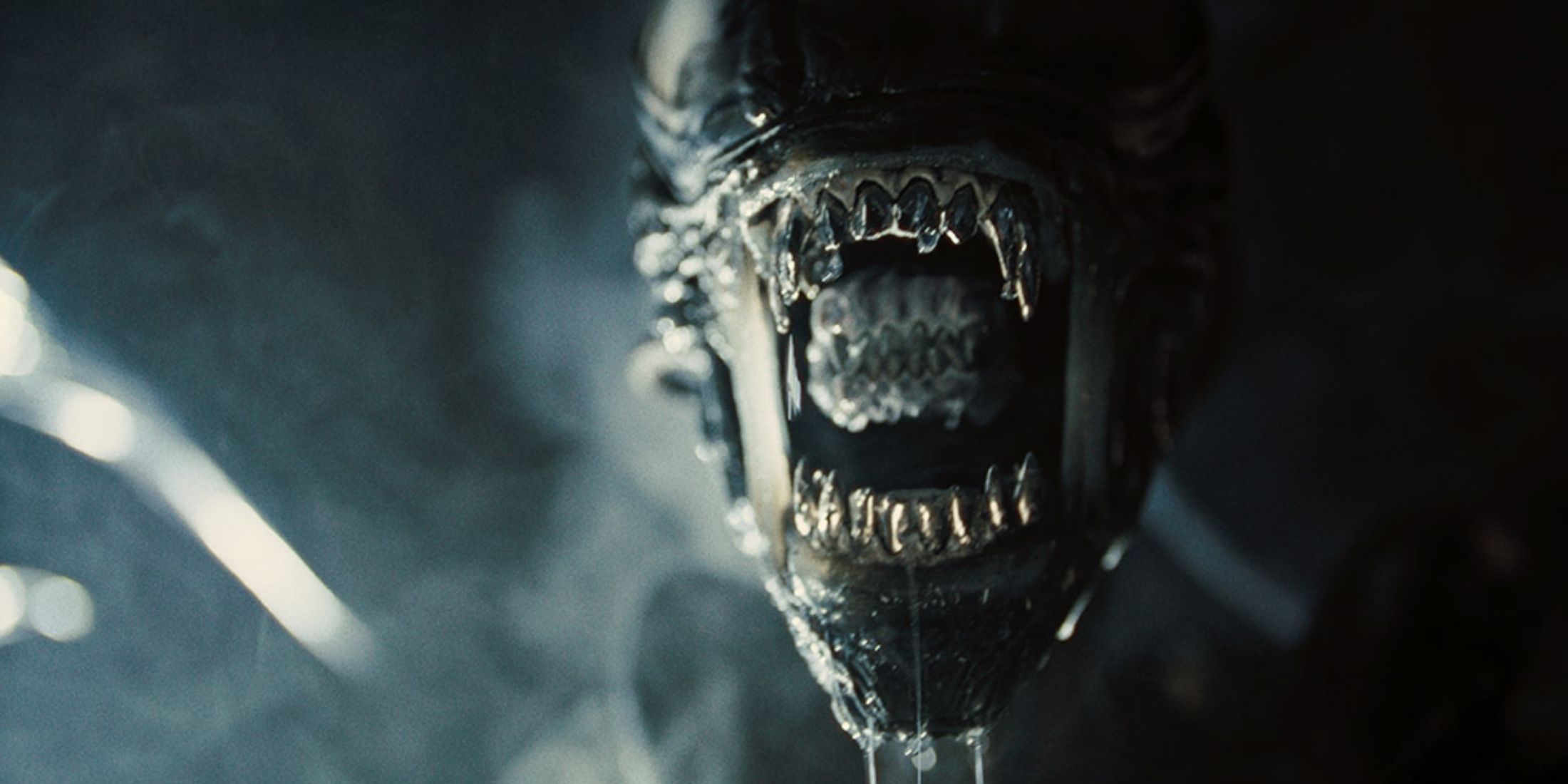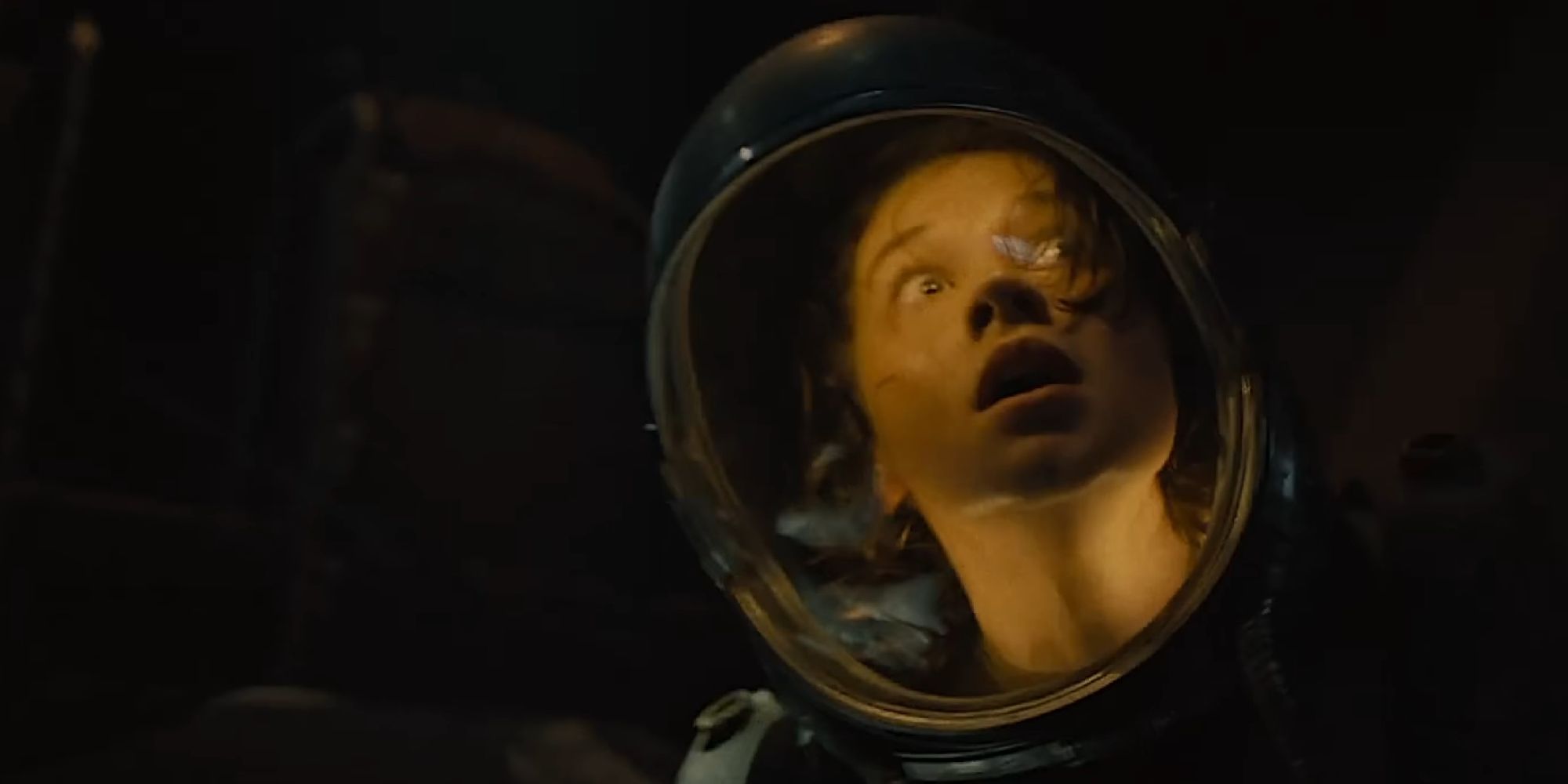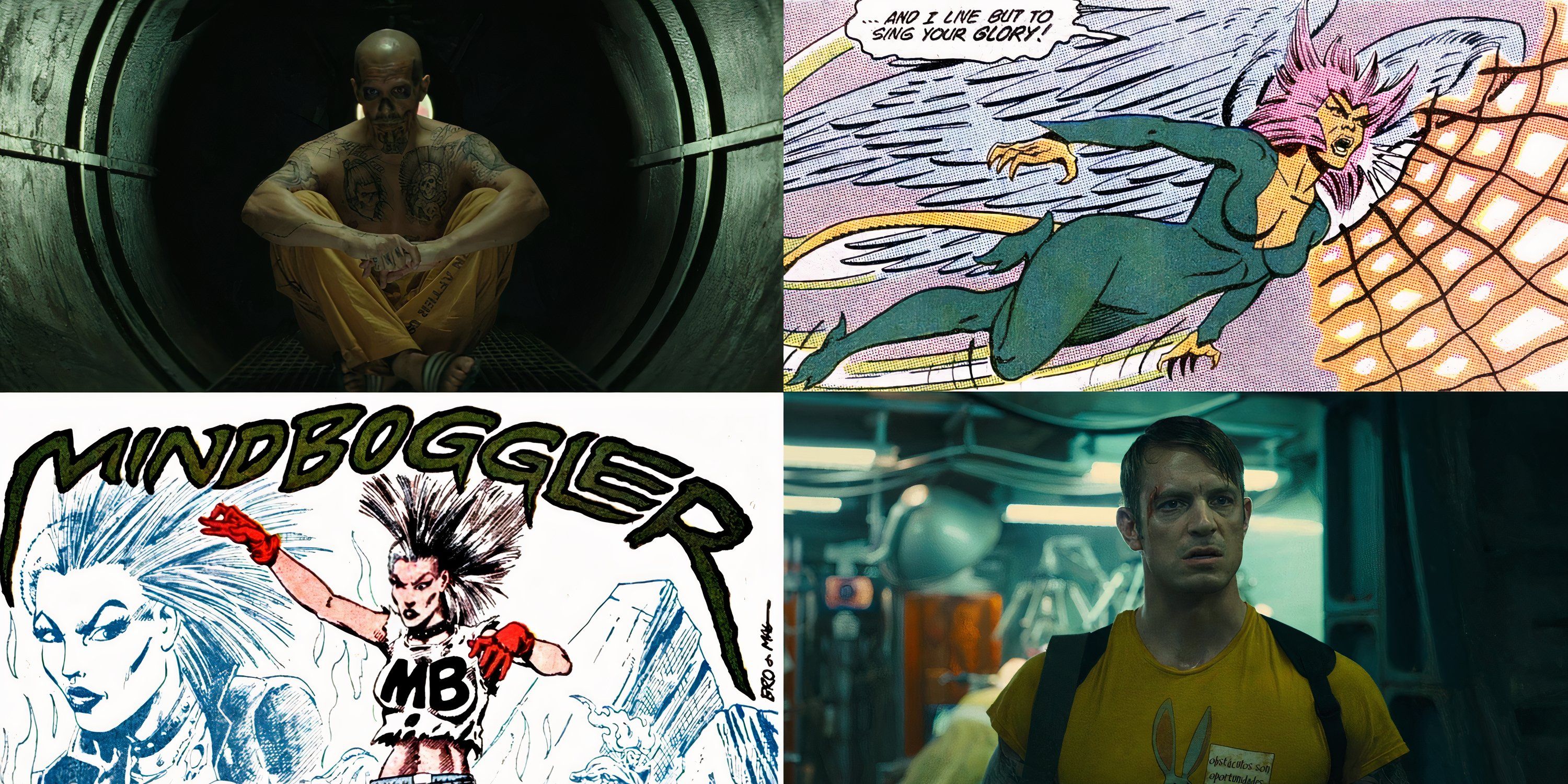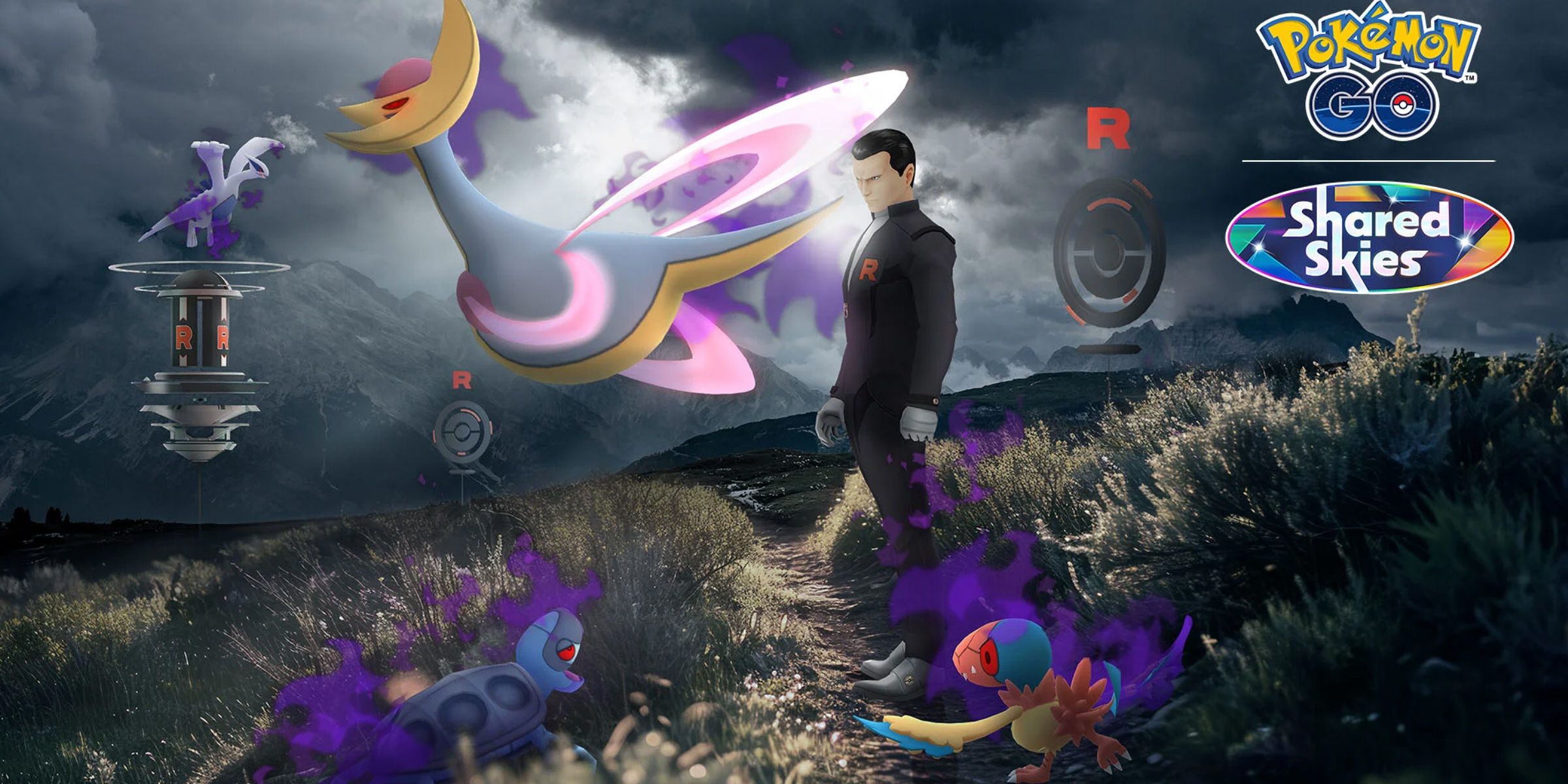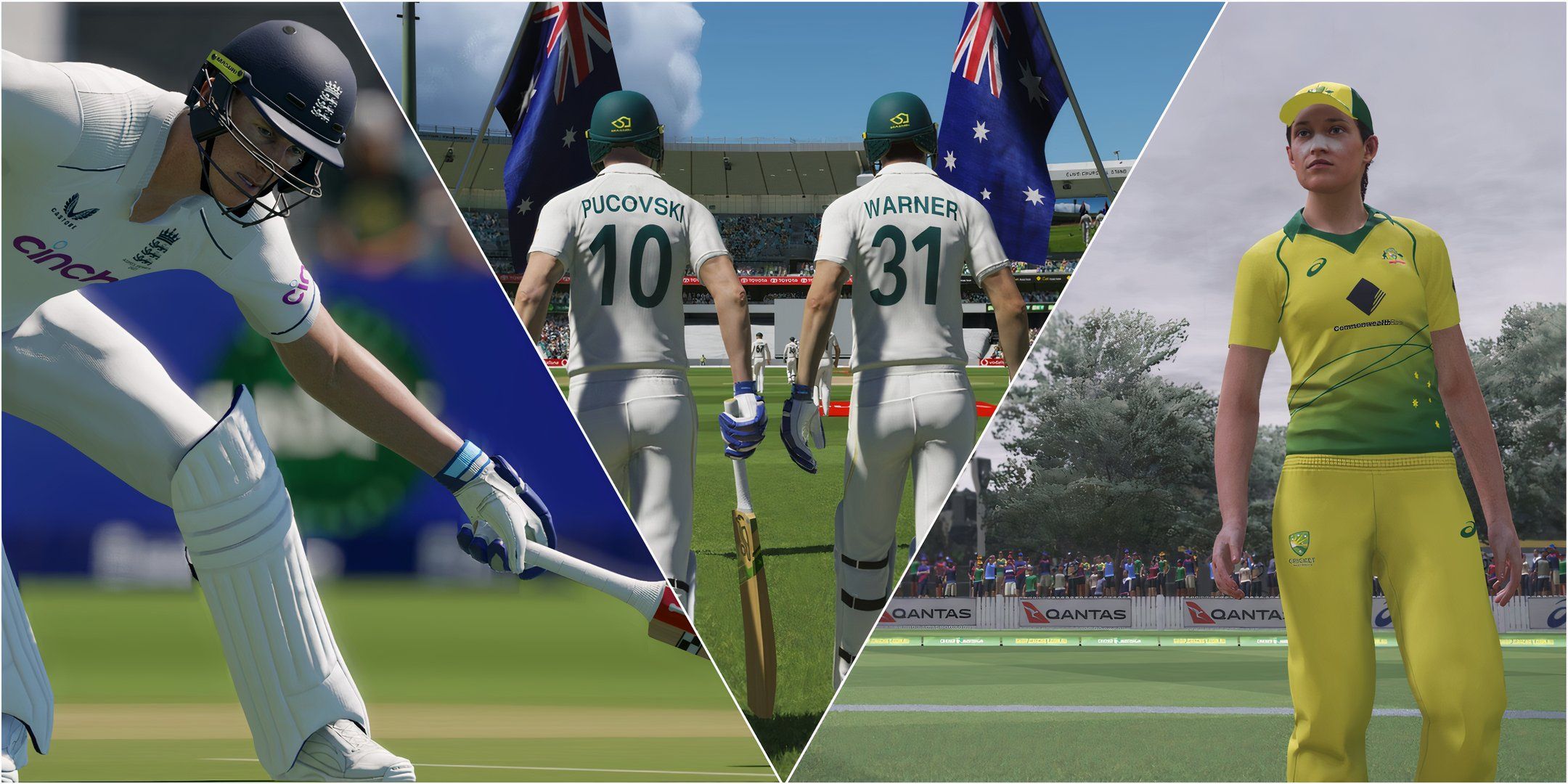Highlights
- “Alien: Romulus brings back the horror legacy sequels trend with practical effects for a refreshing return to the franchise’s roots.”
- “Director Fede Alvarez creates a hybrid of Alien and Aliens tones for Romulus, mixing claustrophobic terror with awe-inspiring scope.”
- “The use of practical effects in Romulus pays homage to the iconic designs of Giger and Winston, setting new standards for horror sci-fi cinema.”
Last week, Alien: Romulus opened in theaters across the country. Romulus is the latest in the recent trend of horror legacy sequels (Scream, Halloween, The Omen, etc). This prequel is the newest installment in the granddaddy of all modern sci-fi horror, Alien. The movie is a refreshingly disgusting return to the franchise’s storied tradition of cramming gobs of steaming goop, rivers of blood, and concentrated tons of human tension and paranoia, into the sweaty, claustrophobic confines of a spaceship, all to horrify and amaze its die hard fan base.
Now almost fifty years removed from Ridley Scott’s Alien, with six sequels/prequels (not counting the two AVP movies), and decades of blockbuster filmmakers using cutting edge technology to expand the visual language of cinematic sci-fi horror that Alien created, Romulus stands as a potent reminder that there is still no replacement for practical, in-camera special effects. Romulus‘ director Fede Alvarez, known for movies like Don’t Breath and Evil Dead, has established himself as a reliably thrilling and visceral horror filmmaker, and no stranger to a quality horror sequel that honors the legacy of its predecessors while still finding its own unique take on its source material.
Related
Alien: Isolation Player Count Spikes a Decade After Launch
The survival horror game Alien: Isolation sees its largest player count spike since 2020 and over a decade after the game’s original launch.
From the first teaser trailer for Alien: Romulus, it was clear that Alvarez was bringing the franchise back to its roots. Alien: Romulus feels like Alvarez’s specific take on a hybrid between the respective tone and visual palettes of Alien and Aliens. Creating an ideal mixture between the claustrophobic terror of the former, and the awe-inspiring scope of the latter. The movie’s central location, an abandoned Weyland Yutani space station called Romulus and Remus, named after the Roman myth, is an ideal setting for Alvarez to unleash his signature combination of practical grotesquerie and unrelenting tension, which he cultivated while making movies like Don’t Breath and Evil Dead. Romulus makes inventive use of the classic Alien iconography, almost entirely through the use of practical effects: a character dies an excruciatingly slow death by acid drip via a wall-mounted, gestating Xenomorph pod, mechanically controlled facehuggers scuttle and leap across the floor of the ship’s hull with horrifying speed, to the filthy yet futuristic design of the entire movie. Every setting from the incredibly lived-in, perpetually moonlit mining colony of Jackson Star, to the immersive, detailed interior of Romulus and Remus, feels like a place that the audience can reach out and touch. Though they may not want to.
The look of the Xenomorph itself, with its sleek, jet-black biomechanical physique, was designed by H.R. Giger and executed by Carlo Rambaldi for the original Alien (1979). Giger and Rambaldi’s efforts to bring unforgettable creations like the facehuggers and the Xenomorph to life in Alien were groundbreaking, because while they all looked authentically alien in their design, these nightmarish creatures still felt unnervingly realistic and tangible to the viewer’s senses. The creature effects done by Stan Winston Studios in James Cameron’s comparatively grandiose Aliens (1986), also work incredibly well, because they were built and photographed in a physical space, making them feel more “real” to the audience on some level, unconscious or not. The iconic showdown between Ellen Ripley (Sigourney Weaver in a practically built Power Loader Mech), and the Queen Alien from Aliens, is a perfect example of how this franchise, at its best, has always pushed the boundaries of practical effects, setting new standards for horror sci-fi cinema.
Obviously, the modern advent of digital effects technology does allow Romulus to produce certain images that simply could not have been done in 1979 or even 1986: an increasingly problematic zero-gravity gimmick that pays off in a snow-globe-esque, floating chamber of toxic Xenomorph blood, the shimmering planetary rings of Jackson Star that hover outside the Romulus and Remus threatening to destroy the ship imminently, to the IMAX scale of the movie itself. But all of these visual elements have some basis in the physical reality of the imagined world. The fact is, that the human brain eye is still incredibly hard to fool, particularly when the computer-generated images in question are supposed to resemble living creatures of immense complexity and distinct physicality, like the Xenomorph, or especially any kind of humanoid.
Practical Effects in Alien: Romulus
Romulus excels in its imperceptible blending of practical effects with CGI enhancement. The clever mixing of the two visual elements gives the heightened sci-fi world of Romulus a grounded sense of verisimilitude. There is, unfortunately, one rather glaring exception to the otherwise uniformly excellent visual effects in Alien: Romulus, that involves the digital resurrection of an iconic character (and actor) from the Alien franchise, although the movie does clearly specify that the figure portrayed in Romulus is in fact a new character. This choice has already been a divisive subject among fans, but good or bad, it could serve as a lesson to all legacy sequels to come.
By stripping down the scale of their story, Alvarez and his collaborators free Romulus, from the galactic expanse of Prometheus and the sometimes confounding lore of Alien: Covenant, returning the Alien to its horror core. Not that the movie lacks ambition in any way. Alvarez actually saves his single-most audacious piece of visual creation of the entire movie, for last. And when it arrives, it is legitimately jaw-dropping.
The practicality of the sets and the creatures in Romulus are on full display, shot in continuous wide shots with deep focus, accentuating every detail of the movie’s design, thus bringing the viewer deeper into the immersive, one-of-a-kind world of Alien. The generational connection between Giger and Rambaldi’s work in Alien, and the radical return to the use of textured, practical special effects in Alien: Romulus is undeniable. Hopefully, the movie’s throwback, analog approach to special effects will serve as a guiding light for any future filmmakers taking on the seemingly endless onslaught of horror legacy sequels that Hollywood is pumping out nowadays. Because there are few more satisfying experiences in all movie-going, than watching a great horror/sci-fi movie like Alien: Romulus, manufacturing terror in the hearts and minds of its audience, the old-fashioned way.
1:49
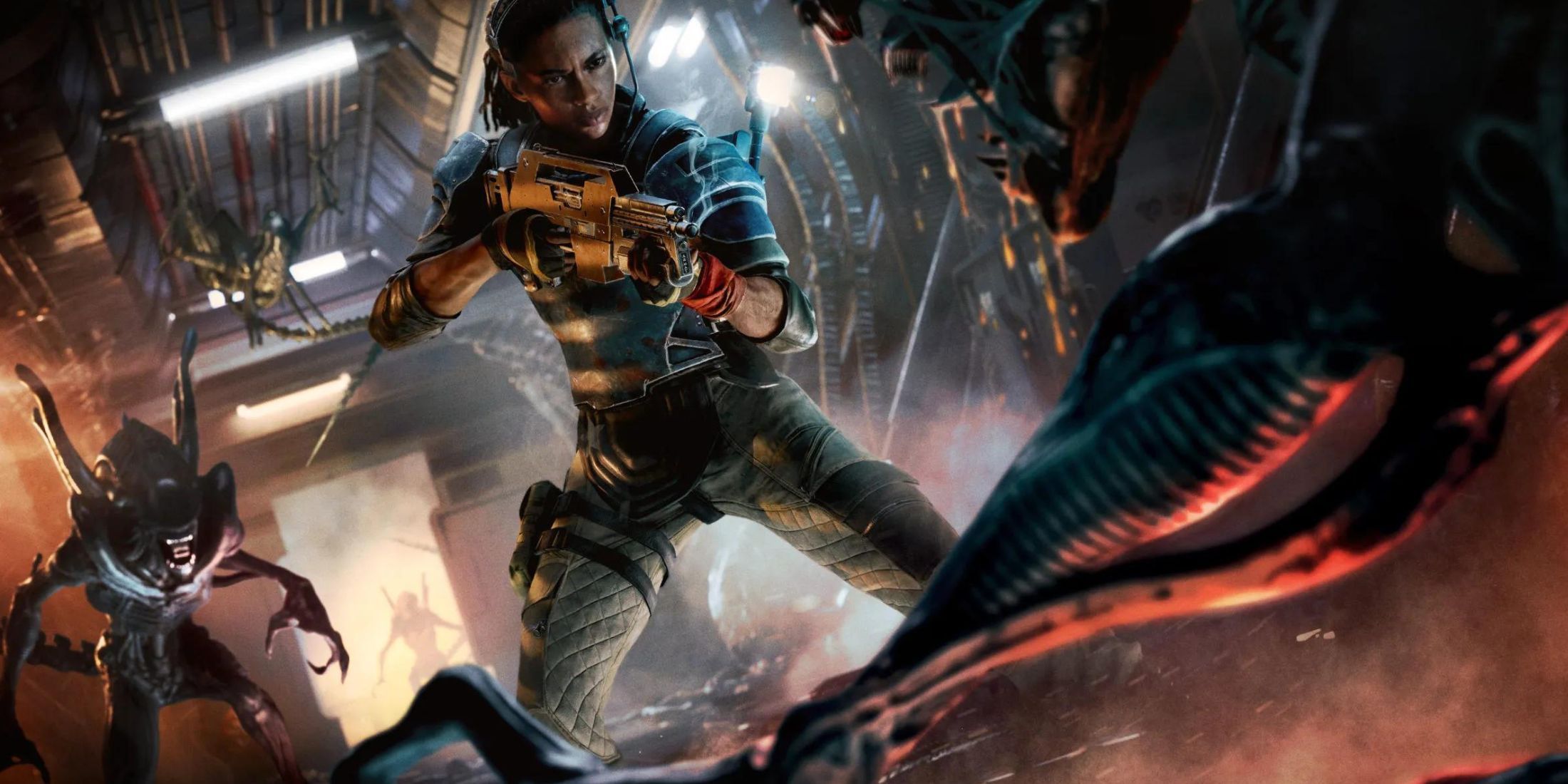
Related
December 19 is Going To Be a Big Day for Alien Fans
Alien fans have a lot to look forward to this year with a brand-new film in theaters and another horror-filled surprise coming on December 19.


